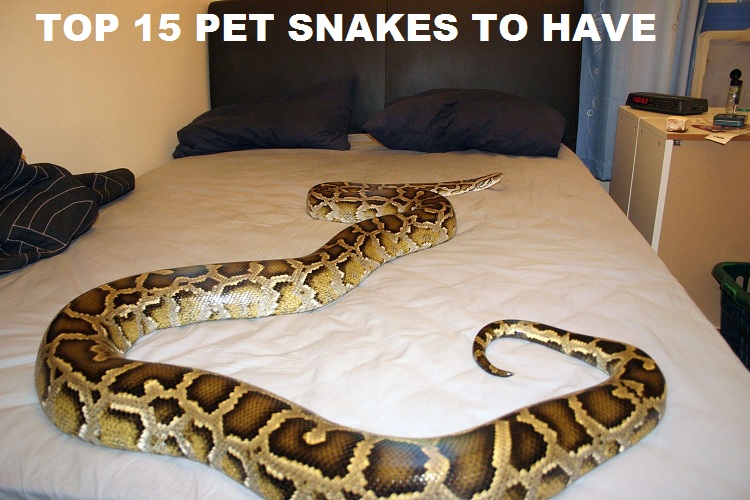Pet snakes are loved by many. This list is for beginning pet owners who might not know what type of pet snakes they should get next. This article will be on 11 Friendly Pet Snakes For Beginners.
There are many ways to enter the snake hobby, and some people just start with a snake that they can handle and work their way up from there. If you’re not sure which kind of snake to start with, this article is for you!
But before we start this list, let’s discuss the very definition of “friendly”. What does it mean? All snakes are quite often classified as such if they don’t charge or hiss at people who put them in their hands.
And certainly, “snakeskin” is a great characteristic for a pet that might be a little bit small. However, characteristically does not mean that they are gentle and do not bite. Some snakes have been known to bite people! I’m going to list these snakes at the end of this article so you can see which ones they are.
READ ALSO: HERBS AND SPICES THAT IS GOOD FOR YOUR DOG
Now, on with the list!
1. Ball Pythons (pet snakes)

Ball pythons (Python regius), also known as royal snakes, are a group of giant snakes that constitute the genus Python and belong to the family Boidae. The genus name, Python, stems from Greek: “πυρ,” meaning “fire,” and the Greek: “βοί”, meaning “to creep,” and was derived from British explorer Sir William Jones’s translation of an earlier name given to the large constrictors. Pythons are found throughout the wild in many parts of Africa, southern Asia including India, Indonesia, China, Bangladesh, and Sri Lanka.
Ball pythons are popular pets among reptile enthusiasts. They are docile and easy to handle if they are born in captivity, but they can be fussy eaters, sometimes refusing food for weeks.[3] They can grow to 6 feet (1.8 m) long.[4]
The ball python is a single species of python found in western Africa. It is generally easily identified by the small size of its markings along with the bold color of its scales. The body markings can be either an orange or yellow color with dark splotches mixed within them.
2. Boa Constrictor
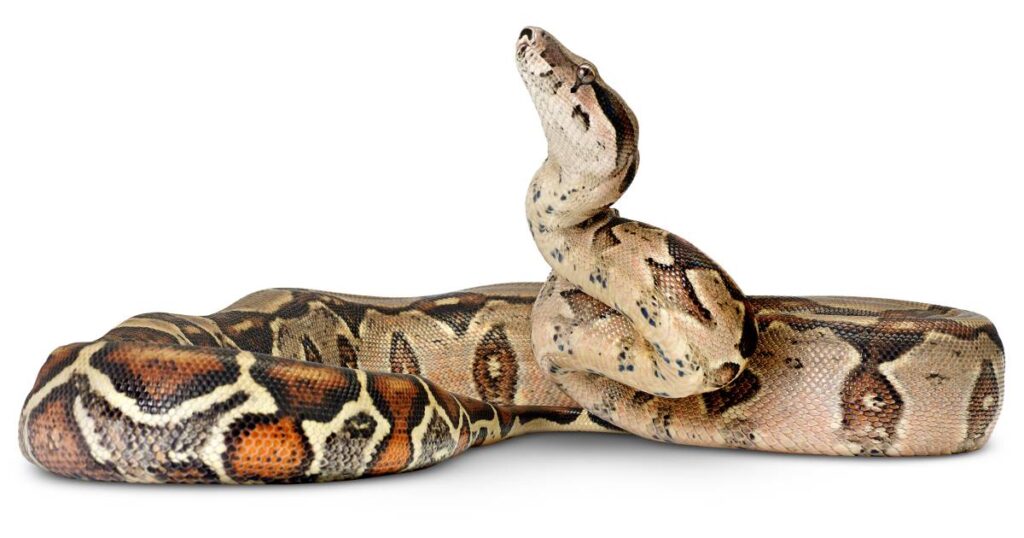
Boas are large constricting snakes that were brought to the Caribbean by invading European settlers. They are found on most of the islands, including Cuba and Hispaniola. Boa constrictors are carnivores who mainly eat small prey like lizards, frogs, birds, and mammals.
The leaf-toed Boa constrictor is a docile species that is not overly dangerous although it will bite if provoked or handled carelessly. Although its venom is not toxic enough to kill a human, it is painful and can cause swelling and local death of tissue.
Boa constrictors rarely reach 4 feet in length; some die before they reach two feet. They grow very slowly, reaching about 3–4 ft (0.9–1.2 m) on average in the wild. Boa constrictors are comfortable in trees and on the ground; they can be found on sea cliffs where they live among rocks and crevices. They will also swim if necessary.
3. Green Tree Python (pet snakes)

The green tree python is our most popular snakehead generation in Singapore, Singapore is the leading country in providing quality livestock and fish to the world. Green tree python is raised by many methods, whether it is natural or artificial breeding.
Another one of Green Tree Python’s common names that you may have heard of is “three-toed green tree python”. If you want to know more about this species please contact me via email with any inquiries.
The green tree python has an elongated body, with a wide head and jaws for catching prey. Today, it is still considered the most popular snakehead in Singapore. They are also called three-toed pythons, because of the three short toes on each foot. Growing to an average length of 4-6 feet (1.2-1.8 meters), they are mainly found in South Asian countries like Sri Lanka, India, and Bangladesh.
Green tree pythons are among the few snakeheads that can survive in environments other than freshwater. One Green Tree Python can last up to 10 years without any special care, thus making it suitable for breeding facilities. However, these pythons can be extremely aggressive towards each other and even to other species like crocodiles and wild dogs.
4. Corn Snake
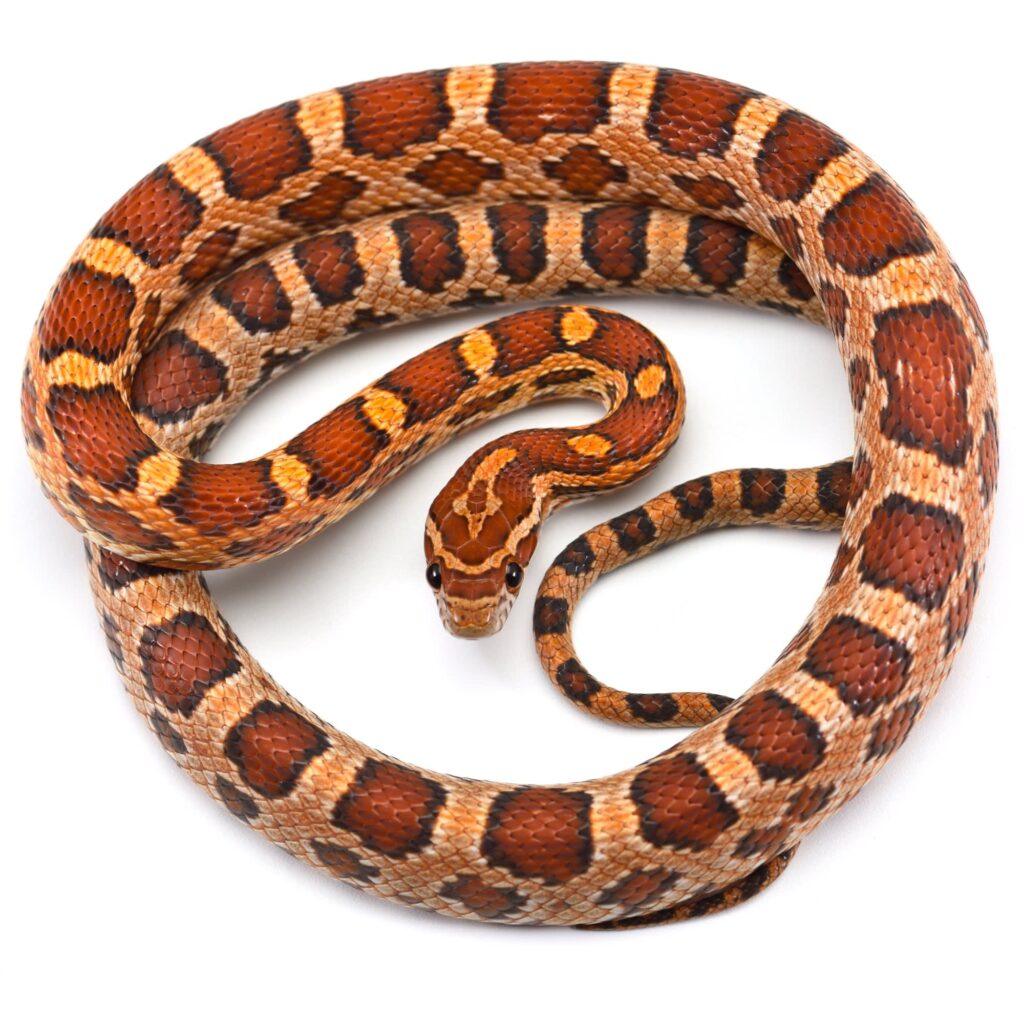
The corn snake is a species of snake that is found in the United States and Mexico, and they are often considered to be docile.
They grow up to around five feet long or around 152 cm long, and they feed on birds, rodents, lizards, frogs, and other small insects. The body coloration of a corn snake can range from reddish-brown to olive green depending on age with its belly being white. Their babies are known as “hatchlings”. Corn snakes have a lifespan of around five years in captivity.
These snake babies can be difficult to sex correctly because females do not develop the distinctive male-specific markings until they reach three years old.
READ ALSO: WHAT DOG HAS THE STRONGEST BITE
5. King Snake

King Snakes are carnivorous, non-venomous snakes that are very territorial. They are easy to identify due to their bold stripes which can be yellow, brown, or black. This snake also has a row of small white dots down the back of its neck, and another row at the base of its tail.
King Snakes can be found in large numbers throughout South America, North America, and Europe. They are eco-friendly snakes because they feed on crickets instead of birds or mice. They can be very dangerous as some have been known to kill a human.
Their venom cannot kill a human, but it can still cause a person serious pain. They bite over and over again over a long period and can cause dizziness and paralysis. It is important to note that King Snakes are not dangerous to humans because they do not have venom at all.
It’s true that whenever a snake bites someone, they often tighten its jaws around the victim’s arm or leg making the snake hold on too tight to use all of its body weight in its bite.
In 2005, three Japanese researchers published an article about an unusual snake in the Amazon rain forests of Peru named “King Cobra. ” The snake was so venomous that it could kill a full-grown man in 15 minutes. But it wasn’t the snake’s venom that made it so dangerous, but its venom glands.
Each one of these glands secreted a substance that was so potent that one teaspoon of the substance could be spread over an area 20 meters in diameter and would remain lethal to any creature that stepped into the poison’s radius. Although this snake did not have venom, its toxicity was just as deadly, and was thus called “King Cobra.”
6. Hognose Snake (pet snakes)
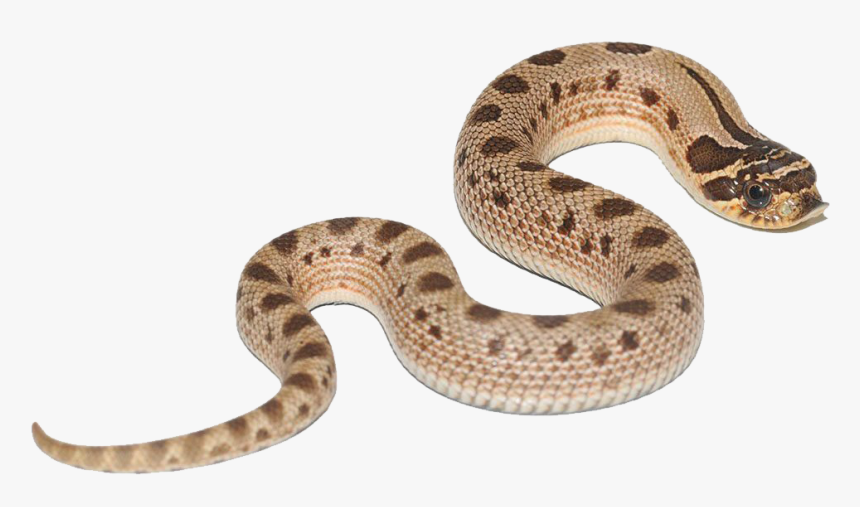
Hognose Snakes are members of the family Heterometridae. They are commonly called “hognose snakes” because of the extended nuchal scale on their nose which gives it a “hob” appearance. There are nine species in this group, with three found in North America and one found outside this region.
They have no teeth, so they swallow their prey whole, mostly preying on invertebrates like insects or earthworms. Hognose snakes live in forests and forests near bodies of water.
A hognose is one of the most misguidedly named creatures on earth. The reason is that most people thought the hognose is a snake, it isn’t. The hognose snake is a member of the family Heterometridae. They are also commonly called “hob snakes” because of their characteristic nuchal scale which extends down from hard to their snouts.
The reason this creature was named “hognose” is because of the shape of its head and neck, they have a large bump or “hob”. The hognose snake has two black eyes and a white stripe on its throat.
Hognose Snakes are commonly found in regions such as North America and Asia. For example, the Red Hognose Snake (Heterodon platypus) is commonly found in the southern United States and parts of Mexico. The Black Hognose Snakes are found in areas like southern Illinois, Kentucky, Missouri, Tennessee, and Texas. Not all hognose snakes are black however, some of them come in other colors such as orange or yellow.
7. Python (pet snakes)
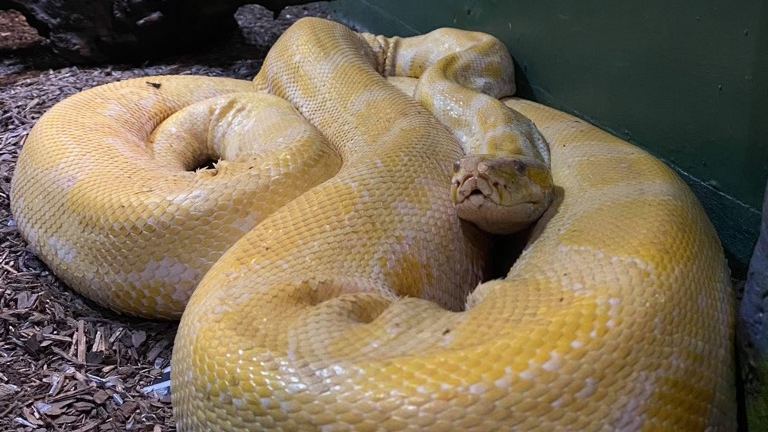
Pythons are large snakes, typically found in the swamplands or grasslands of South-Western Asia. Pythons are considered one of the largest snakes in the world and grow to be around 8 meters long. They are carnivorous and have been known to eat animals from other species including rats, chinchillas, small cats, small dogs, iguanas, and even water buffalo! They can eat prey up to their size which is quite an impressive feat for a snake.
These snakes usually give birth to live babies that stay with them for about 10 months before going off on their own. Pythons are very social creatures and live in large family groups. They can be seen basking in the sun in groups or even in pairs which are not very common among snakes. They are not usually aggressive unless defending their territory or young which makes them more of a threat to the occasional human than the other way around.
Pythons are quite popular in the pet trade because of their relatively docile nature, intelligence, and friendly demeanor. Pythons are interesting creatures that make for impressive pets, but one must remember that they require a lot of space and special care to keep healthy.
READ ALSO: HOW LONG DO CATS LIVE
8. Mabuk shawl snake
Mabuk shawl snakes, or what we just referred to as Mabuk, is a segment of the greater North American boa constrictor species. It is characterized by having a white background, black markings around the eyes and mouth, and some red on either side of their jawline. They are part of the same species as those found in South America, some say they are from them migrating north to escape from predators down there.
In the wild, they live in Argentina, Brazil, and Uruguay where they search for new prey sources on grasslands. Their diet includes rodents that reside in these areas but also snakes who have been eaten by other animals first.
However, while it is believed they are wild animals because of their source of habitat, they are raised for commercial trade in Argentina, Brazil, and Uruguay. It was discovered that Mabuks were being raised for the pet trade by an American zoo called Jungle Adventures in Miami Florida. This zoo had sold them to other zoos all over North America without knowing that they were raised in captivity. They were not part of the species found in wild Argentina, Brazil, or Uruguay at all.
9. Common viper
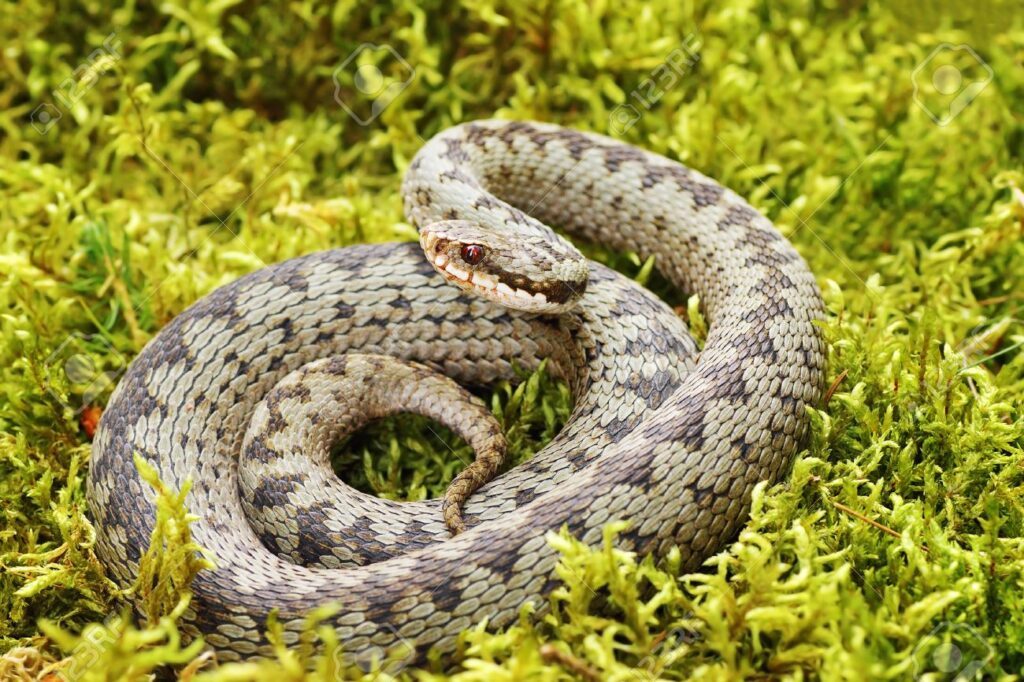
The Common viper is the most deadly snake in North America, and one of the most dangerous snakes found in the world. Common vipers are “non-aggressive”, meaning they rarely react to humans unless provoked by them. They are often seen on hilltops or rock crevices when they become active at night when they seek food (primarily rodents).
They produce venom which has anticoagulant properties that make it particularly harmful to people who may be immobilized for long periods.
The venom is also neurotoxic, meaning that it can either paralyze or kill depending on how severe of a reaction it causes in the body of its victim.
Common vipers are often confused with cottonmouth watersnakes, which are effectively the same species, but which are larger.
They lack heat-sensing pits under their scales, so they cannot distinguish warm-blooded animals from cold-blooded ones. Instead, they rely on dark markings to facilitate their hunting ability by seeing small animals out in the open at night.
The species is named for its commonality among North American locals and its similarity to snakes of Africa and Southeast Asia. Though there has been some speculation as to whether this is a native species due to some confusion as to its origins during colonial times, this species has been around long before European settlers arrived in North America.
10. Rat snake (pet snakes)
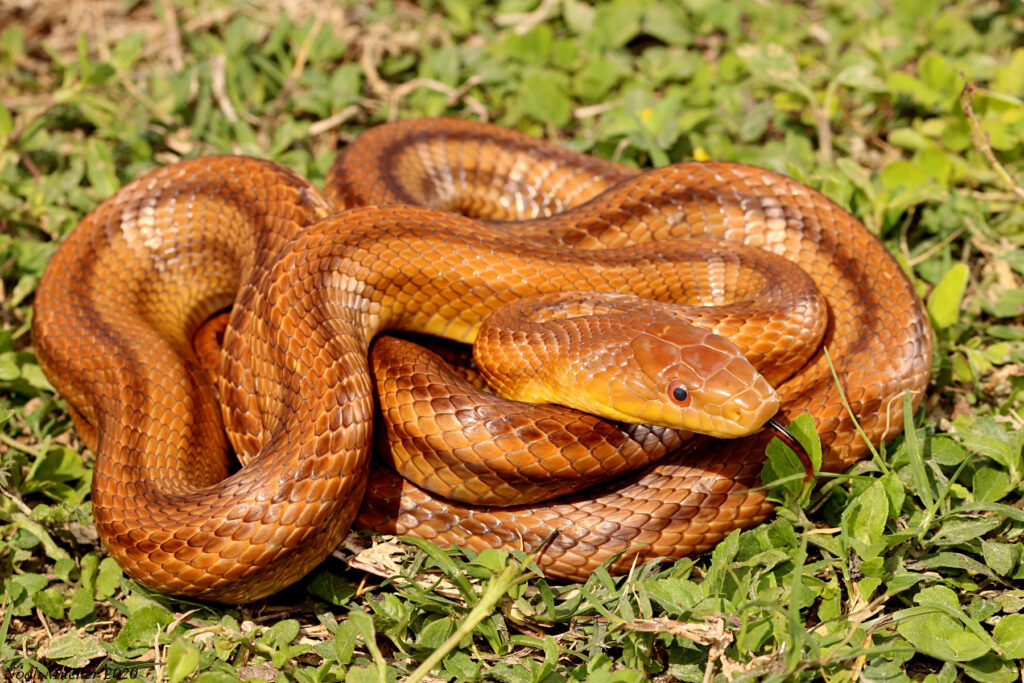
Rat snakes are a type of snake, which prefers to live primarily in the soil. They are sometimes found in urban areas, though can also be seen crawling around rural environments. While they aren’t a venomous snake, they do have a very dangerous bite and their dangerousness is primarily due to their ability to climb walls and other surfaces easily.”
These snakes, also called brown rat snakes by some taxonomists. They are a type of snake that typically lives underground in most regions of the world. They are related closely enough to rattlesnakes. That they can interbreed with them if they’re put into contact with each other’s natural environment. Rat snakes are found most commonly across the continent of Asia.
Also, they are generally small in size. The adults reaching lengths of four to seven feet in most areas of their range. With some others known to reach lengths of 10 feet or more. They are not usually considered to be dangerous beyond their ability to produce a venomous bite. But they are quite at risk of being overfed. An individual rat snake that has been overfed is likely to lose its ability for self-defense. And instead, become a threat to others in the area.
Rat snakes can live up to 20 years in captivity if they’re well cared for and kept away from potential dangers such as humans and other rats.
11. Desert Marine Kingsnakes
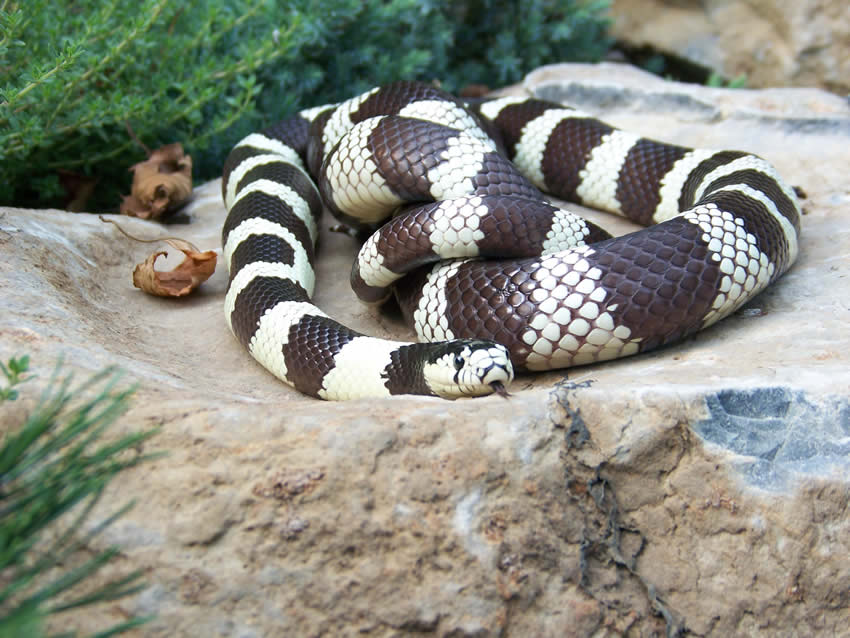
Desert Marine Kingsnakes are one of the most amazing snakes to keep as pets. You can find them in many different colors, sizes, and patterns. They are easy to care for and they like to be handled often.
Desert Marine Kingsnakes are one of my favorite reptiles because they live in arid regions. But they maintain moist skin that is not only difficult for predators like scorpions to bite through. Also helps them stay cool during their desert habitat.
Many people take pleasure in the fact that these snakes are so easy to care for. And due to their friendly nature, many people who keep them as pets love one or more of these magnificent snakes. What do Desert Marine Kingsnakes eat?
These snakes are unique in that they will eat almost anything they come across. They will usually hunt for small insects, scorpions, spiders, young mice, small lizards. That they can swallow whole or just stick into their mouth.
RELATED ARTICLE: TOP 20 MOST VENOMOUS SNAKES IN THE WORLD
So here’s my final recommendation…
The Python! These beauties are so docile and gentle and also good as pet snakes…
Unless they are left to themselves or if they feel threatened! They can grow to be about 6-10 feet in length (a little shorter than the female anaconda). So make sure you have enough space for one of these! Also, make sure you provide them with the proper heat and humidity. Because they like to burrow into the ground and use that as a place of warmth and comfort!
Visit these sites to buy any of these pet snakes of your choice.
I hope you enjoy whichever snake that you choose to purchase as a pet for your children; just make sure that you don’t leave it alone with them, especially if it’s poisonous.

